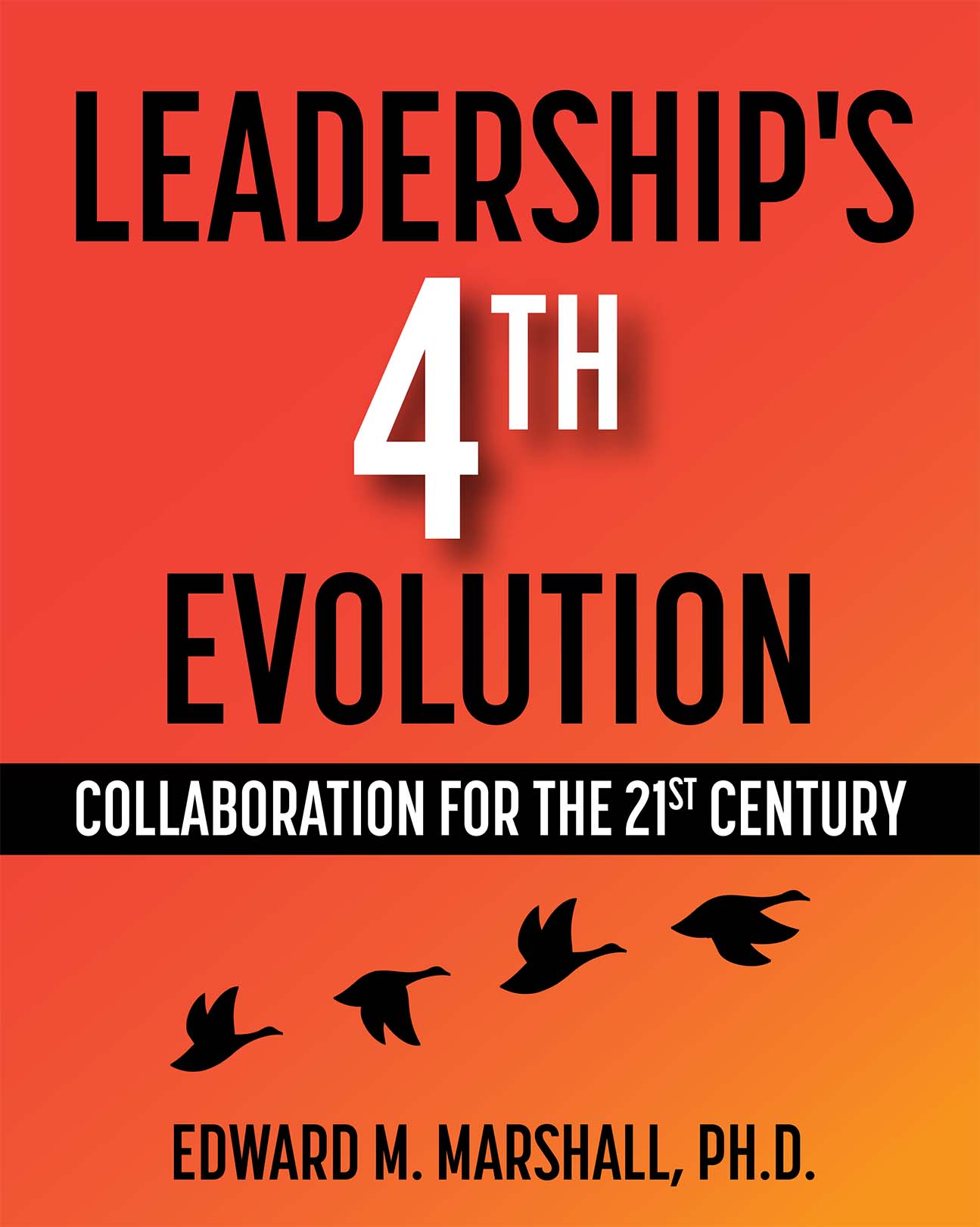The 21st Century Digital Age presents business students and leaders of today and tomorrow with a complex set of professional challenges: market volatility, economic and employment uncertainty, inequality, accelerated technology, a diverse Millennial/GenZ workforce, and existential threats from pandemics and climate change to mass migrations and famine. The predominant leadership paradigm, however, is still 20th Century Industrial Age hierarchy, the Power Paradigm, which is a compliance-oriented approach based on power and control. This approach is the assumed approach to leadership for many graduate schools, and is the predominant way most organizations are still led, even though our 21st Century realities require a new paradigm.
The new paradigm is Collaboration, leadership’s 4th Evolution, which is a principle-based approach to building trust, ownership, and psychological safety that empowers current and future leaders in business administration to transform leadership cultures so that they can meet critical 21st Century challenges. As a practical methodology, it provides award-winning and proven tools and processes for individual leaders, collaborative teams, and organizations that will empower them to create workplaces where people can be their best selves and do their best work so they can produce superior results.
Leadership’s 4th Evolution: Collaboration for the 21st Century is grounded in the preeminent work of giants in the leadership field: Douglas McGregor’s Human Side of Enterprise (1960), Edgar Schein’s Organizational Leadership and Culture (1985), Stephen Covey’s Principle-Centered Leadership (1990) and James Kouzes and Barry Posner’s Leadership Challenge (2007, 2017), among others.
The 2nd Evolution was McGregor’s People Paradigm, which helped us understand that people are not cogs in a machine, are social beings, and want to be appreciated and respected. The 3rd Evolution was Stephen Covey’s Principle Paradigm, which helped us shift from leadership based solely on power to leadership based on immutable principles.
By the early 21st Century, the 4th Evolution, Collaboration, came to fruition after 30 years of work with over a thousand managers in more than 100 projects that addressed critical business challenges, from the strategic alliance between Marriott International and Host Marriott, to IT transformations at Microsoft and VMware, to DuPont’s Information Systems organizational transformation in the Gulf Coast of Texas. In each case, collaborative teams of business leaders learned how to build high levels of trust, which accelerated their ability to achieve breakthrough results. We learned that collaboration is how people naturally want to work, that “We” is more important than “I,” collective action is more effective than rugged individualism, and almost any problem can be solved if we work collaboratively with each other.
Work gets done through people. It is leadership’s responsibility to engage, motivate, empower, and inspire them so that they can be their best selves and do their best work. Leadership’s 4th Evolution: Collaboration for the 21st Century equips students and leaders with a principle-based methodology that achieves that goal. Collaborative leadership recognizes people want to be trusted, respected, engaged, and appreciated. Based on four decades of applied research and consulting work with Fortune 500 leaders and companies on five continents, this book provides a comprehensive theory of collaboration, as well as proven collaborative processes and tools that empower leaders, teams, and organizations to create collaborative leadership cultures.


